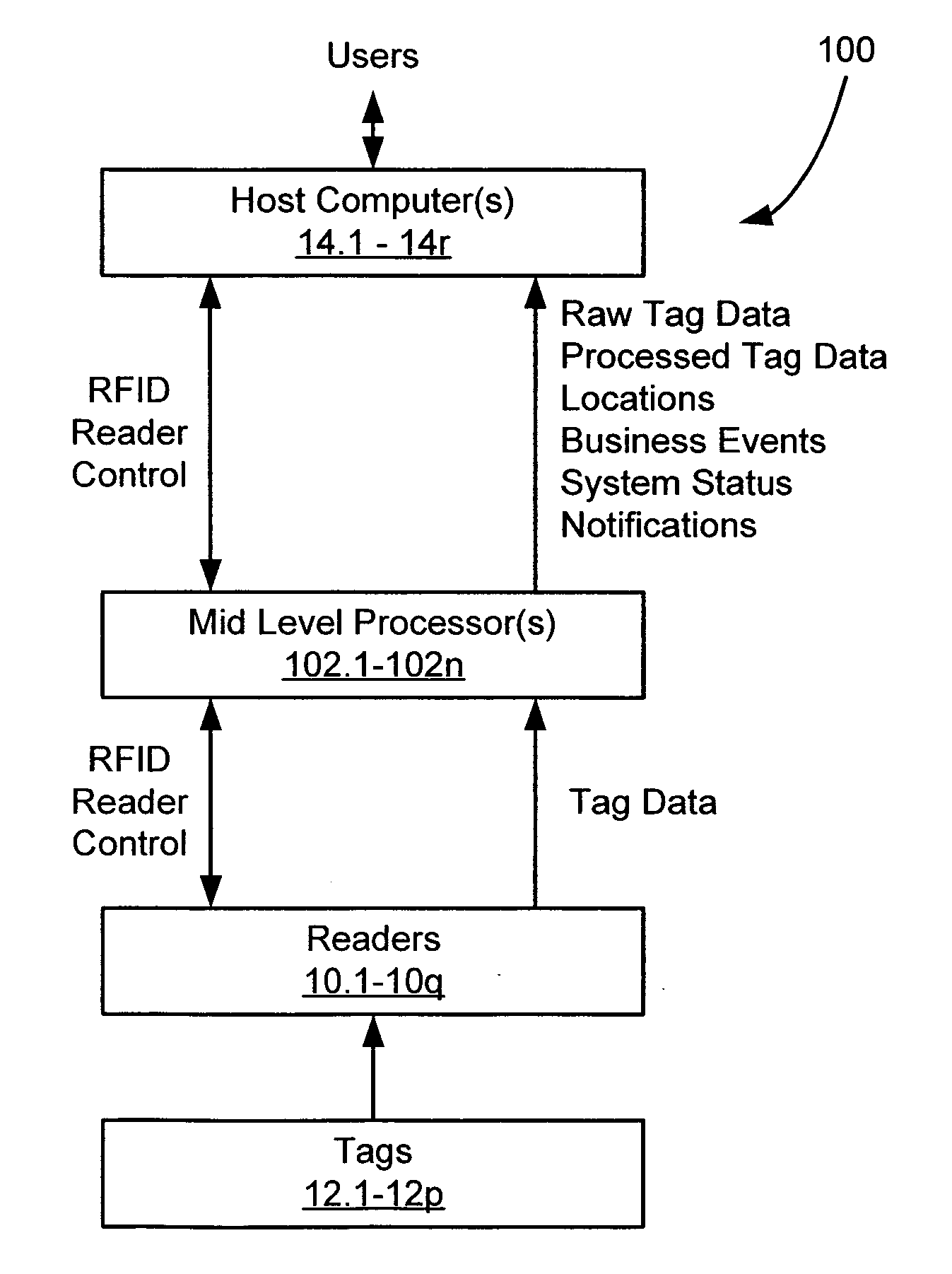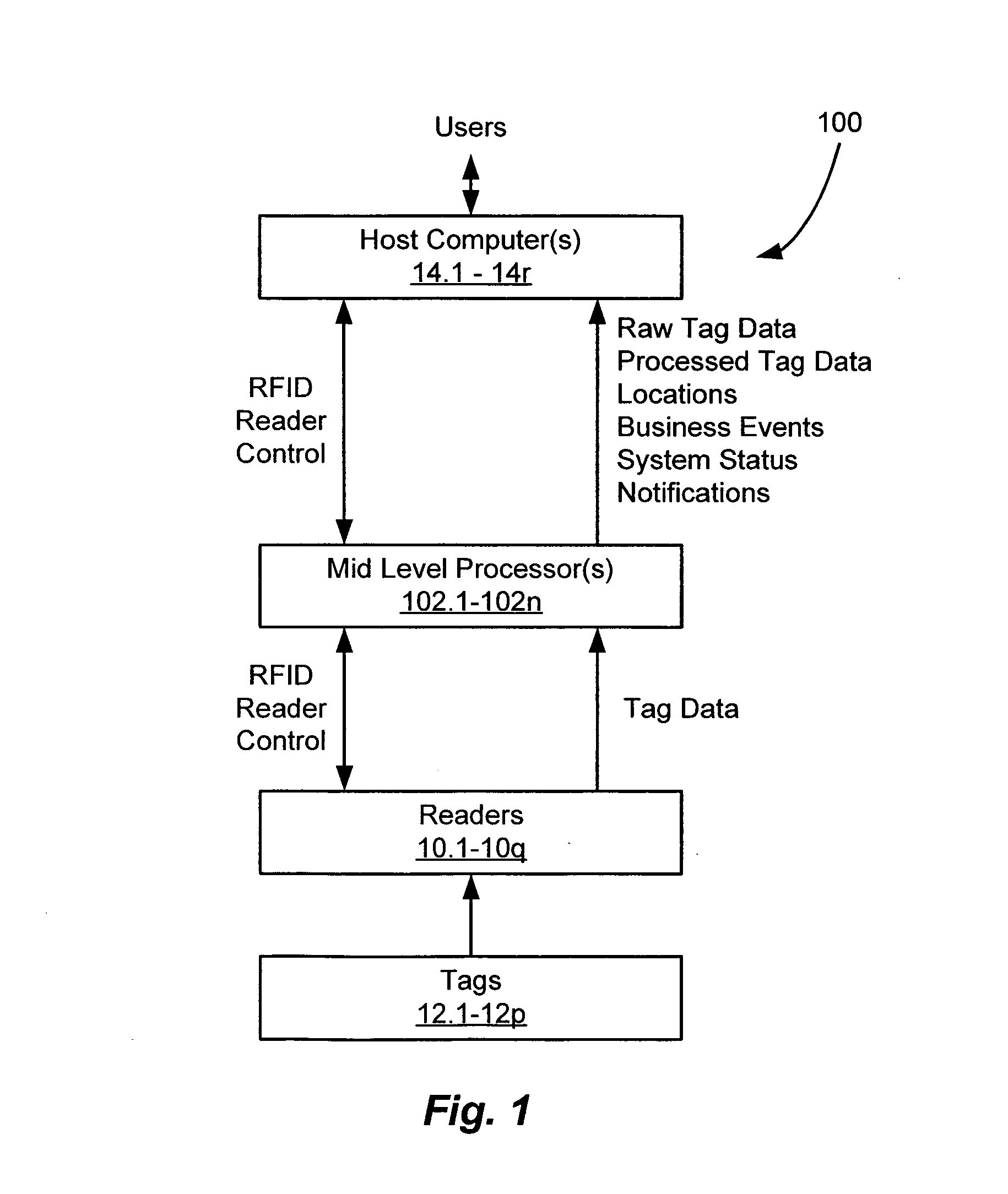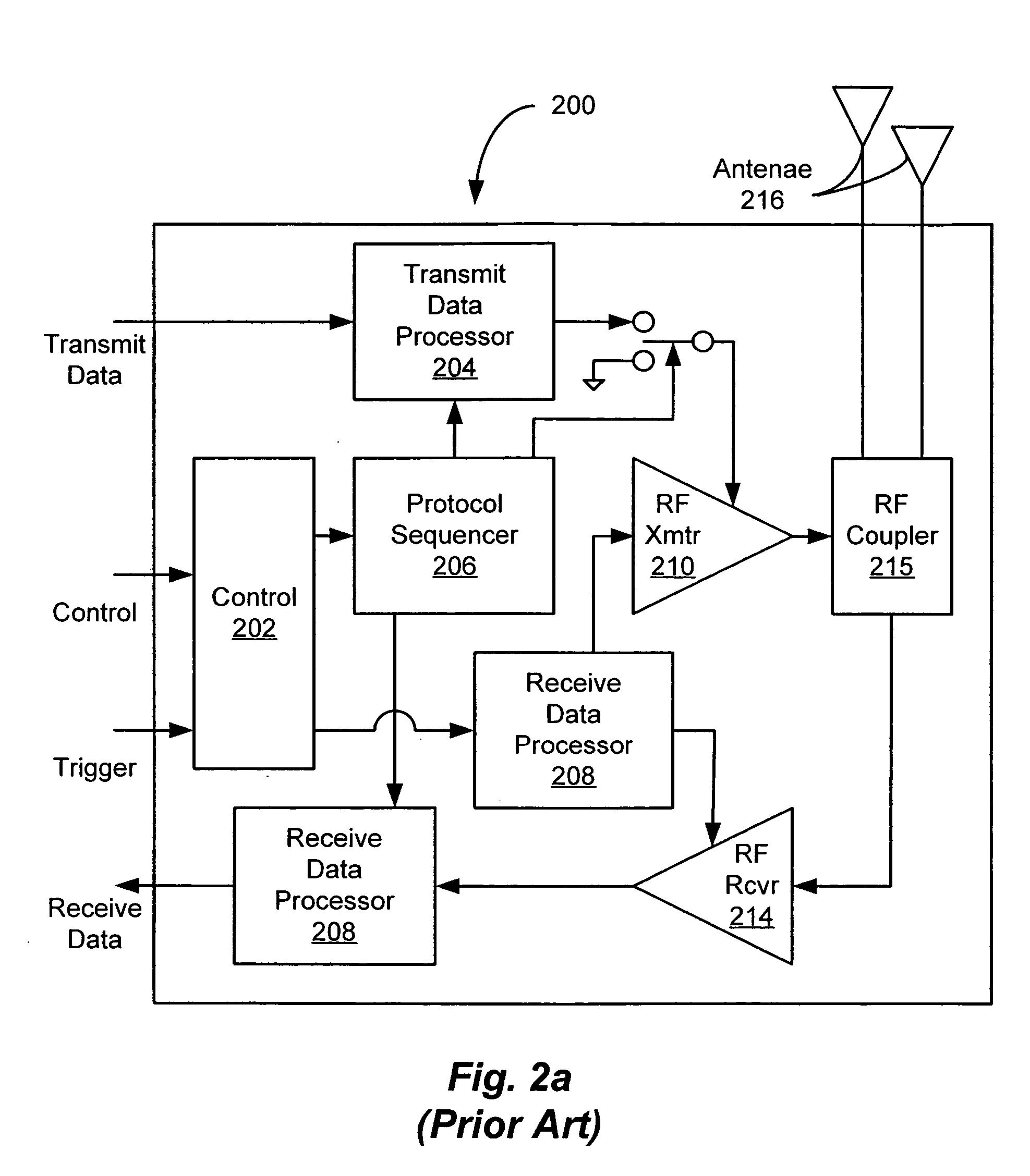RFID tag data acquisition system
- Summary
- Abstract
- Description
- Claims
- Application Information
AI Technical Summary
Benefits of technology
Problems solved by technology
Method used
Image
Examples
Embodiment Construction
[0054] The disclosure of U.S. Provisional Patent Application No. 60 / 592,933 filed Jul. 30, 2004 entitled ACCESSING RFID TAG DATA USING A READER ARRAY is incorporated herein by reference.
[0055] An architecture of an RFID system is disclosed that facilitates the accessing of RFID tag data within an RFID environment.
[0056]FIG. 1 depicts an illustrative embodiment of an RFID system architecture 100, in accordance with the present invention. In the illustrated embodiment, the RFID system architecture 100 includes a plurality of RFID transponders or tags 12.1-12.p, a plurality of RFID readers 10.1-10.q, at least one host computer 14.1-14.r running client software applications, and at least one mid-level controller / processor 102.1-102.n in communication with the readers 10.1-10.q and the host computers 14.1-14.r. It should be appreciated that the functions necessary to implement the various elements of the system architecture 100 may be embodied in whole or in part using hardware or soft...
PUM
 Login to View More
Login to View More Abstract
Description
Claims
Application Information
 Login to View More
Login to View More - R&D
- Intellectual Property
- Life Sciences
- Materials
- Tech Scout
- Unparalleled Data Quality
- Higher Quality Content
- 60% Fewer Hallucinations
Browse by: Latest US Patents, China's latest patents, Technical Efficacy Thesaurus, Application Domain, Technology Topic, Popular Technical Reports.
© 2025 PatSnap. All rights reserved.Legal|Privacy policy|Modern Slavery Act Transparency Statement|Sitemap|About US| Contact US: help@patsnap.com



